CAYRATIA
Cayratia
Juss. in J.F. Cuvier, Dict. Sci. Nat. ed. 2, 10: 103. 1818; Shetty & Singh in Singh et al., Fl. India 5: 266. 2000; Ren & Wen, Fl. China @ eFloras.org 12: 189.
Perennial climbing herbs or lianas. Tendrils usually 2- or 3-furcate, rarely racemosely branched. Leaves stipulate, 3-foliate or pedately 5-9-foliate; leaflets toothed. Inflorescence divaricately branched cymes, usually axillary. Flower buds ovoid or depressed globose. Flowers small, actinomorphic, bisexual or unisexual (then plants dioecious or polygamo- monoecious), 4-merous, hypogynous. Calyx entire or lobed. Petals 4, cucullate at apex, spreading or recurved, soon caducous. Stamens 4, inserted below disk; anthers bithecous, dehiscence by longitudinal slits; short staminodes in female flowers. Disk well developed, cupular, 4-lobed or undulately lobed. Ovary immersed in disk and adnate to it, 2-locular, 2 ovules per loculus on axile placentas; style simple, short, subulate; stigma discoid or capitate. Fruit a berry, more or less globose, 1-4-seeded. Seeds erect, semiglobose or triangular, albuminous.
38 species
Cayratia trifolia **
Cayratia trifolia
(L.) Domin, Biblioth. Bot. 22(89): 370. 1927; Morniyama in Hara et al., Enum. Fl. Pl. Nepal 2: 94. 1979; Shetty & Singh in Singh et al., Fl. India 5: 275. 2000; Singh & Sharma, Fl, Chamba Dist. 229. 2006; Causonis trifolia (L.) Mabb. & J. Wen, Mabberley’s Pl.-Book, ed. 4: 1101. 2017; Vitis carnosa (Lam.) Wall., Numer. List.: n. 6018. 1831; V. trifolia L., Sp. Pl. 203. 1753; Sharma & Kachroo, Fl. Jammu (Illustr.) 2: t. 58. 1983; Cayratia carnosa (Lam.) Gagnep. in Locomte, Notul. Syst. (Paris) 1: 348. 1911; Cissus carnosa Lam., Encycl. 1: 31. 1783; Fl. Pak. @ eFloras. org p. 17.
Weak herbaceous climber, woody at base. Branchlets +/- quadrangular, densely pubescent. Tendrils leaf opposed, 3-5- branched, wiry, not spirally coiled, ending in adhesive disc. Leaves alternate, pinnately trifoliate; petioles 2.5-5 cm long, pubescent; leaflets 3-8 cm x 2-7 cm, terminal being the largest, ovate, obovate, elliptic or ovate-lanceolate, apex acute or acuminate, margin serrate or dentate, base cuneate, oblique or obtuse, both surfaces pubescent; leaflets petiolate, petiolules 2-8 mm long. Stipules oblong, ca. 3 mm long, membranous. Inflorescence axillary, terminal or leaf opposed biparous umbellate cymes with divaricate branches; peduncle 4-7 cm long, pubescent. Flowers ca. 2.5 cm long, actinomorphic, bisexual, 4-merous, hypogynous, greenish-white; pedicels 1-3 mm long, elongating in fruits, pubescent. Floral buds oval, 1.3-1.8 mm, apex rounded, pubescent. Calyx truncate or obscurely 4-lobed. Petals 4, greenish-white, free, spreading or recurved, hooded at apex, ca. 2 mm x 1 mm, elliptic to oblong, pubescent outside. Disk cupular, white margined, 4-lobed, surrounding and adnate to the base of ovary. Stamens 4, inserted below disk, filaments slender, +/- as long as petals, filaments longer than anthers; anthers oval, bithecous, 0.5 mm long, longitudinal dehiscence. Carpels 2, syncarpous; ovary bilocular, 2 ovules per loculus; style stout, subulate, ca. 1 mm long, persistent; stigma small, discoid. Berry black, globose, 2-4-seeded, 0.7-1 cm across. Seeds ca. 6 mm long, triangular.
Common Names: Bush Grape, Fox Grape, Three-leaved Wild Vine, Three Leaf Cayratia; Amalbel, Gidadrak, Ramchana, Tamanya (Hindi)
** It is treated as a synonym of Causonis trifolia (L.) Mabb. & J. Wen, Mabberley’s Pl.-Book, ed. 4: 1101. 2017. in Plants of the World online (treated under the genus Causonis Raf., Med. Fl. 2: 122. 1830) while according to World Flora Online this species is currently unchecked and awaits taxonomic scrutiny.
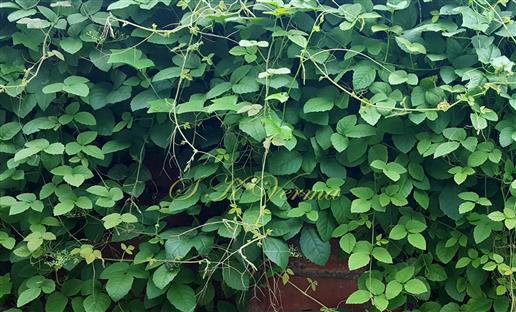
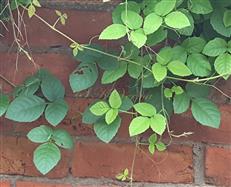
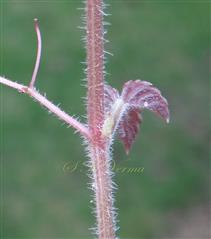
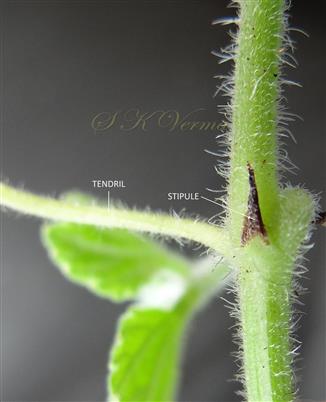

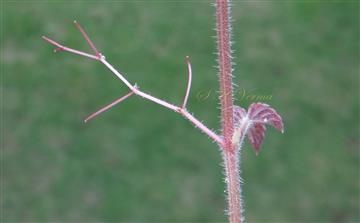
-Biparous umbellate cymes-131413.jpg)
-105408.jpg)
-DSC07443 - Copy.jpg)
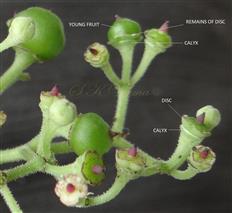
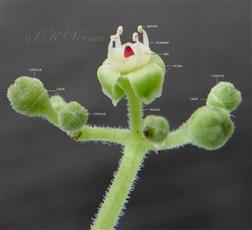
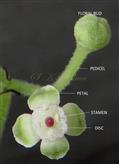
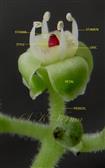
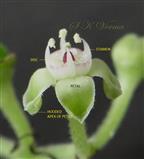
 and developing fruit-DSC07454A.jpg)
-DSC07457.jpg)





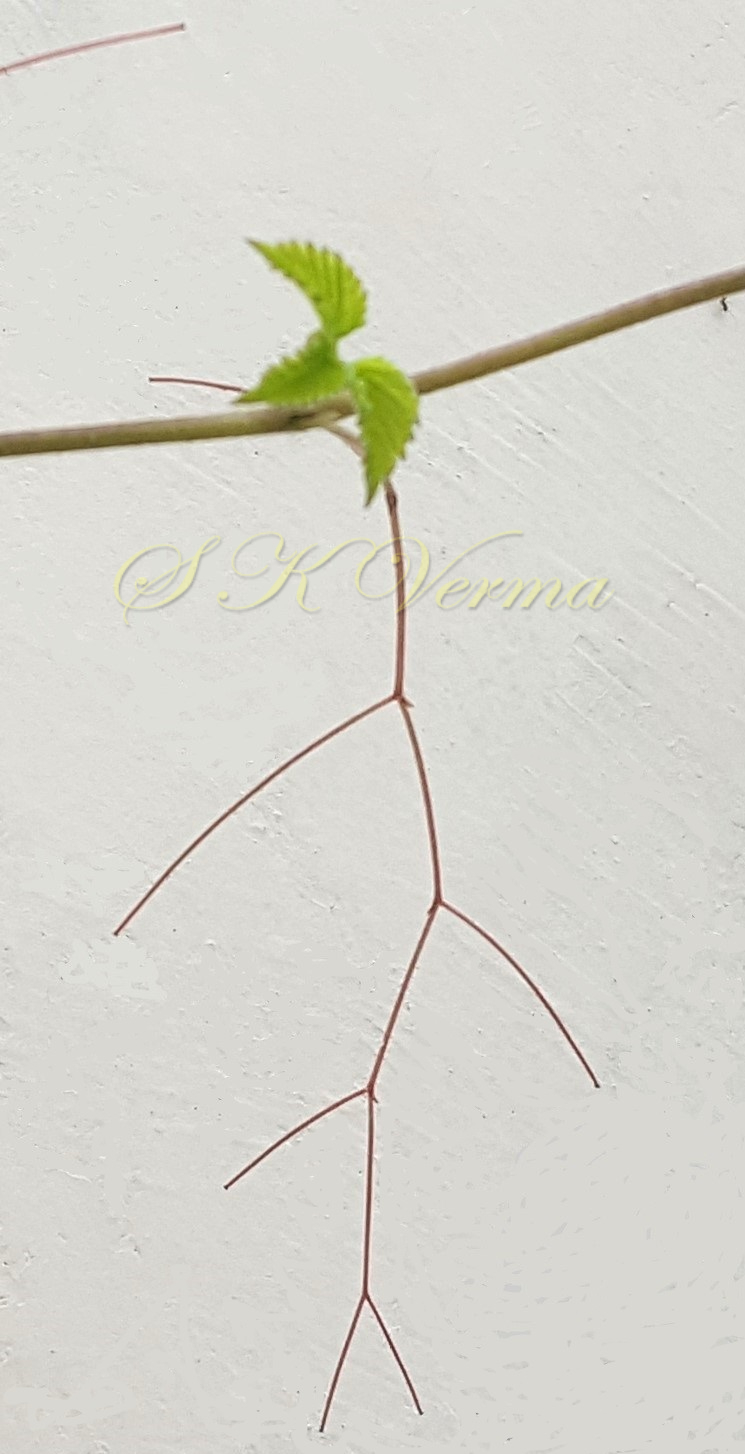

-Biparous umbellate cymes-131413.jpg)
-105408.jpg)
-DSC07443 - Copy.jpg)





 and developing fruit-DSC07454A.jpg)
-DSC07457.jpg)